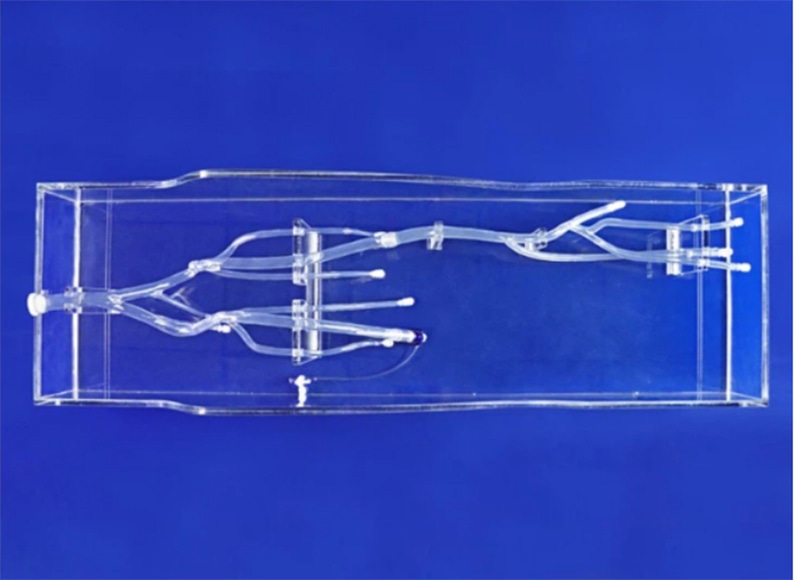
#Industry News
Understanding Varicose Veins in the Lower Limbs: Causes, Symptoms, and Treatment Options
Lower Extremity Vein I
Introduction:
Varicose veins are a common condition that affects millions of people worldwide, particularly in the lower limbs. These enlarged, twisted veins can cause discomfort, pain, and cosmetic concerns. Understanding the causes, symptoms, and available treatment options for varicose veins can help individuals make informed decisions about managing this condition.
Causes of Varicose Veins:
Varicose veins occur when the valves within the veins become weakened or damaged, leading to inefficient blood flow and the pooling of blood in the veins. Several factors can contribute to the development of varicose veins in the lower limbs, including:
1.Age: As people age, the valves in their veins may weaken, increasing the risk of varicose veins.
2.Genetics: Family history plays a significant role in the development of varicose veins. If your parents or close relatives have varicose veins, you may be more prone to developing them as well.
3.Gender: Women are more likely to develop varicose veins due to hormonal changes during pregnancy and menopause, as well as the use of hormonal contraceptives.
4.Prolonged standing or sitting: Occupations or lifestyles that involve prolonged periods of sitting or standing can increase the risk of varicose veins.
5.Obesity: Excess weight puts additional pressure on the veins, making them more susceptible to valve damage.
Symptoms of Varicose Veins:
Varicose veins can manifest with various symptoms, including:
1.Visible, bulging veins: The most apparent sign of varicose veins is the appearance of enlarged, twisted veins that are often blue or purple in color.
2.Leg pain and heaviness: Individuals with varicose veins may experience aching or throbbing sensations in the legs, especially after prolonged periods of standing or sitting.
3.Swelling and discomfort: Swelling, particularly around the ankles, may occur due to fluid retention caused by inefficient blood circulation.
4.Itching and skin changes: Dry, itchy skin and the development of skin ulcers or sores near varicose veins are possible symptoms.
5.Restless legs syndrome: Some individuals with varicose veins may experience an irresistible urge to move their legs, especially during periods of inactivity or at night.
Treatment Options:
Fortunately, several effective treatment options are available for varicose veins. The choice of treatment depends on the severity of the condition and individual preferences. Common treatment methods include:
1.Lifestyle modifications: Simple lifestyle changes can alleviate symptoms and prevent the worsening of varicose veins. These include regular exercise, maintaining a healthy weight, avoiding prolonged sitting or standing, and elevating the legs when resting.
2.Compression stockings: Wearing graduated compression stockings can help improve blood flow by applying pressure to the legs, reducing swelling and discomfort.
3.Sclerotherapy: This minimally invasive procedure involves injecting a solution into the affected veins, causing them to collapse and fade over time.
4.Endovenous laser treatment (EVLT): In this procedure, a laser is used to heat and seal off the affected veins, redirecting blood flow to healthier veins.
5.Surgical interventions: In severe cases, surgical procedures such as vein stripping or ligation may be necessary to remove or tie off the affected veins.
Prevention and Self-Care:
While varicose veins may not always be preventable, certain self-care measures can help reduce the risk and manage symptoms effectively:
1.Regular exercise: Engaging in physical activities like walking, swimming, or cycling can improve leg muscle tone and promote healthy blood flow.
2.Healthy diet: Maintaining a balanced diet rich in fiber and low in salt can help manage weight and reduce the risk of varicose veins.
3.Avoiding tight clothing: Wearing loose-fitting clothes and avoiding tight socks or stockings can promote proper circulation.
4.Leg elevation: Elevating the legs above heart level for short periods can help reduce swelling and relieve discomfort.
5.Avoiding prolonged sitting or standing: Taking breaks and moving around regularly during long periods of sitting or standing can prevent blood from pooling in the veins.





